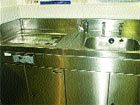Punch and Die Toolroom Logic
Pharmaceutical Technology Europe
High quality tablet compression tooling is expensive, albeit consumable. With the potential for tooling damage during tablet production, transportation and storage, an acceptable method of cleaning, repairing, validating and storing tooling is required by anyone who manufactures tablets - and the regulatory inspection authorities.
Worldwide, the pharmaceutical industry invests vast amounts of resources in developing, improving and producing tablets. The requirements of the industry are widely known: high production rates, a dry and stable product with an acceptable shelf-life, easily modified release and performance characteristics, accurate dosage and compression tooling that enables the manufacture of tablets with unique shapes and embossing identification on both sides. Industry investment also offers advantages for the patient; tablets are portable, easy to administer, have small bulk and any unpleasant tastes or appearances can be masked.
Consider for a moment what we as an industry are trying to achieve. We are trying to blend together a range of active ingredients and excipients, all of which have differing particle size, shape and characteristics, and are usually in a powdered form. This mixture is then transformed into a compacted product using a high-speed mechanical tablet press. During the compression process, many factors govern the quality of the tablet and the ease or difficulty with which the tablets are produced. The tablet press should, of course, be well maintained and correct set-up procedures should be followed. It goes without saying that the tablet compression tooling should be in pristine condition.
Points to consider
Many compression mixes are speed-sensitive and will not produce satisfactory tablets at inappropriate speeds; this is the main reason why tablet press manufacturers install variable speed controls for the rotor or turret and the powder feeding mechanism. The dwell time, when maximum pressure is applied to the mix, is relative to the peripheral speed of the turret and the diameter of the punch head flat.

Figure 1: Combination sink unit and drainer.
Too many 'fines' in a compression mix or heat-sensitive products occasionally form a sticky paste around the outside diameter of punch tips. This is more common on lower punch tips than on upper punches. When this occurs, very rapid and severe damage to both the machine cam tracks and the punch heads will result. The under-head angle on the lower punch, where it is in contact with the draw down and dosing cams, will wear very quickly and the radius and dwell flat on the top of the punch usually show signs of severe scoring. Products with a high elastic recovery ratio after compression may also lead to premature lower punch head wear. The high force necessary to eject a tablet with a high elastic recovery ratio may be extreme and the pressure between the lower punch head and the ejection cam may cause damage. Abrasive products have a major impact on the punch tips and the result will be tablets with indistinct embossing.
Clearly, there are many reasons why problems occur during tablet compression, and not all problems are the direct result of the press or the compression tooling - assuming that the press has been set up correctly.

Figure 2: Micro-fine polishing machine.
Maintenance
High quality tablet compression tooling is expensive, even though they are consumable items. With all this potential damage to punches and dies during tablet production transportation and storage, an acceptable method of cleaning, repairing, validating and storing tooling is required by anyone who manufactures tablets. Additionally, inspection authorities are looking more closely at conditions under which punches and dies are cleaned, validated, stored and issued.
Adequate training should be provided for responsible personnel relating to punch and die maintenance, and tooling suppliers can offer formal certified training courses for these procedures. Think about the tool storage and maintenance area in your plant. How many times have you seen several sets of punches and dies stacked in trays or boxes on the maintenance bench waiting to be cleaned, polished and stored away? How easy would it be for these sets of tools to be accidentally damaged or inter-mixed, swapping just one punch from each set?

Figure 3: The Approve system to check, validate and measure tooling.
Theory into practice
One company, AstraZeneca (Macclesfield, UK), has for many years taken exceptional care of its tablet compression tooling by employing the latest ideas and procedures for punch and die cleaning, polishing and secure storage. However, the company has recently completely refurbished its existing facilities and updated its procedures to ensure that it stays at the forefront of technology and current good manufacturing practices.
AstraZeneca removed all existing storage cabinets, polishing benches and cleaning equipment from its tool maintenance area and considered a total punch and die maintenance package. The issues of standard operating procedures (SOPs), security, thorough cleaning, polishing and validating the tooling were taken into account during the design of the overall scheme.

Figure 4: Cabinets and drawers for tooling storage.
Punches and dies are removed from the tablet compression machine, placed securely into specially designed baskets and are transported from the tablet production area to the tool storage area. The baskets of punches and dies are loaded into an ultrasonic cleaner that has been fitted into a purpose-designed stainless steel combination sink unit and drainer (Figure 1).
The ultrasonic cleaner has a digital display and touch panel controls for easy operation. When the tooling has been thoroughly cleaned, it is manually rinsed in the adjoining sink unit and then immediately dried in the drain area. Any necessary repairs are done by trained operators, using standard industry accepted equipment and procedures. After cleaning, the tools are polished automatically (Figure 2).
The tooling is placed into carriers that are inserted into a rotary micro-fine polishing machine specially designed for the pharmaceutical industry. The tools in their rotating carriers are immersed into a granule polishing media for a predetermined length of time. The polishing action may be programmed to periodically lift and lower the tooling in the polishing compound and also change rotational direction to ensure a totally even surface finish. Compared with conventional methods of overall punch polishing, the consistent speed of the polishing heads and the choice of media produce a superior micro-fine surface finish across the whole of the punch. The micro-fine polisher will polish all types of tooling, including punches and dies for the IMA Comprima machine (IMA SpA, Bologna, Italy). When the tools are again loaded into a tablet press for a production campaign, they have the optimum surface finish, enabling them to operate at their full potential.

Figure 5: Workbenches
After all remedial work and polishing has been completed the tooling is checked, validated and measured using Approve (I Holland Ltd, Nottingham, UK), a fully computerized, easy-to-operate measuring system that electronically records all necessary dimensions and information relating to a specific set of tools (Figure 3). The dimensions are checked against tool manufacturers' original reports and are available for inspection by the Medicines Control Agency (MCA) or US Food and Drug Administration (FDA) auditors when required.
The tooling is then lightly oiled and stored in specially designed inserts that fit accurately into drawers of steel cabinets. Inserts, drawers and steel cabinets should be designed to provide maximum mechanical protection for the tooling whilst allowing easy access and minimal handling. The range used by AstraZeneca groups the products into specific categories, each with a given colour code (Figure 4). Individual punch and die storage drawers are designed to contain one full set of upper punches, lower punches and dies, and each drawer is labelled with the respective product name and code and is colour co-ordinated to its specific category. Every single drawer is individually locked so that when a set of tooling is required for production, the relevant coded drawer key is issued, and this key will only open the one correct product drawer. This locked drawer system has clear advantages compared with cabinets containing many drawers but only one locked door; most importantly, it minimizes the risk of issuing incorrect or inappropriate tool sets to production staff.
The cabinets themselves are connected together and the cabinet tops are manufactured as long sections, enabling them to be used as workbenches (Figure 5). The cabinets and worktops are silicon-sealed between each other and to the floors and walls. Where necessary metal infills have been supplied and sealed to relevant fixtures to ensure that dust or granules can not collect behind the cabinets and workbenches (Figure 6). The worktops and cabinets are all colour-matched and fitted together in what could be best described as in the style of a fitted kitchen.

Figure 6: Metal infills.
In summary
New SOPs were compiled to cover the operation of the new equipment and new practices. The author believes this newly refurbished toolroom area to be unique and a world leader within the pharmaceutical industry, and paves the way for all other punch and die maintenance and storage areas.
Acknowledgements
The author would like to acknowledge the co-operation and assistance of everyone involved in this project, with special thanks going to Michael Bull, Bill Bennett, Karen Brightmore and Pat Longdon (all at AstraZeneca) and Roger Bannister (Holland Versatool).

Drug Solutions Podcast: A Closer Look at mRNA in Oncology and Vaccines
April 30th 2024In this episode fo the Drug Solutions Podcast, etherna’s vice-president of Technology and Innovation, Stefaan De Koker, discusses the merits and challenges of using mRNA as the foundation for therapeutics in oncology as well as for vaccines.